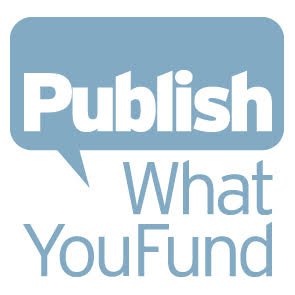How to use IATI data to track gender equality funding

This post is written by Jamie Holton, from Publish What You Fund on their Gender Financing Project.
Tackling gender inequality is a crucial step in the improvement of overall development outcomes. In 2015, 193 countries committed to achieving gender equality, through Sustainable Development Goal 5 (SDG 5). However, it remains difficult to track which gender equality projects are being funded, where, with what aims and crucially, with what results. Reaching and measuring progress towards SDG 5 will require more transparent, usable and robust gender data. To address this, we established the Gender Financing Project.
Our project aims to map different sources of funding towards gender equality, and to provide recommendations to governments, donor agencies, and civil society to improve the availability and quality of information on gender equality work. This will help us to better allocate and coordinate resources for gender equality, and to hold funders accountable to their gender equality commitments.
Gender Financing Project Video Tutorial Series
Over the course of our research in Kenya, Nepal and Guatemala, gender equality specialists repeatedly told us that there is insufficient knowledge or capacity within their organizations to navigate and track gender financing. As a response, we developed a series of tools and resources to help gender advocates find and use this data through our Gender Financing Project Video Tutorial Series.
This video series consists of four short videos and are geared for newer data users who would like to learn how to track aid and development funding for gender equality
This video series consists of four short videos and are geared for newer data users who would like to learn how to track aid and development funding for gender equality. The videos provide a step-by-step guide to tracking gender equality funding flows captured through the two largest sources of open aid data: The Organisation for Economic Co-operation and Development’s Development Assistance Committee (OECD-DAC) and the International Aid Transparency Initiative (IATI). Both platforms have gender policy markers that allow publishers to identify their funding flows as gender-related.
To ensure accessibility, each video includes the option for English closed captions [CC], as well as subtitles in French, Spanish, and Nepali. The playlist for the four videos can be accessed here.
- Video 1 provides an overview of gender financing, what it includes, why it is useful to track it, and should help you to identify which data source may best meet your needs. Video 2 focuses on tracking gender financing with the OECD gender-focused aid dashboard while video 3 covers the OECD Creditor Reporting System (CRS).
- Video 4 provides an introduction to tracking gender financing with IATI data, and this is what we’ll focus on here.
The video includes a beginner’s guide to IATI: what it is, its strengths and limitations, where to find IATI data and how to use it. We focus on using d-portal, the most user-friendly option for accessing IATI data at the moment.
IATI has many advantages. Any organization can publish to IATI – over 1,200 bodies already have -- so you can access a large amount of data. It can also be updated at any time – some organizations publish data on a monthly or quarterly basis. Another advantage of IATI is that it allows donors to publish project results and important project documents, which can be a critical resource to understanding the impact of gender funding and how resources might be allocated more effectively.
However, there are a few noteworthy limitations. For one, d-portal doesn’t give you the full raw datasets -- it visualizes certain data fields and allows you to then access and download a sub-set of the total available data. More technical skills are needed to access and manipulate large data sets. Gender financing data is also only as good as the data that publishers make available. It is dependent upon donors publishing good quality, timely, and usable information about their gender equality work, and labelling it correctly.
We encourage all donors to make it easier to track gender financing by clearly labelling gender projects with the gender equality policy marker when publishing to IATI
We encourage all donors to make it easier to track gender financing by clearly labelling gender projects with the gender equality policy marker when publishing to IATI. In addition, as no group is homogenous, we encourage donors to mention the gender group(s) they aim to target with their gender equality projects, as well as any other defining characteristics, within project descriptions and project documents.
Finally, we recommend that donors publish gender analyses by incorporating them into pre-appraisal documents and to publish more gender-disaggregated results, including in reviews or evaluation documents. Doing so would be a great step forward in better understanding whose gender equality donors are aiming to improve, why, how, and whether they are actually successful at doing so.
We hope this video tutorial series is a useful starting point for any gender advocate to inform their program design, coordination with partners, monitoring and evaluation, and fundraising. We welcome any feedback and encourage you to share them with anyone who may find them helpful.
The Gender Financing Project is delivered by Friends of Publish What You Fund in partnership with Publish What You Fund and receives support from Plan International USA and Save the Children USA.